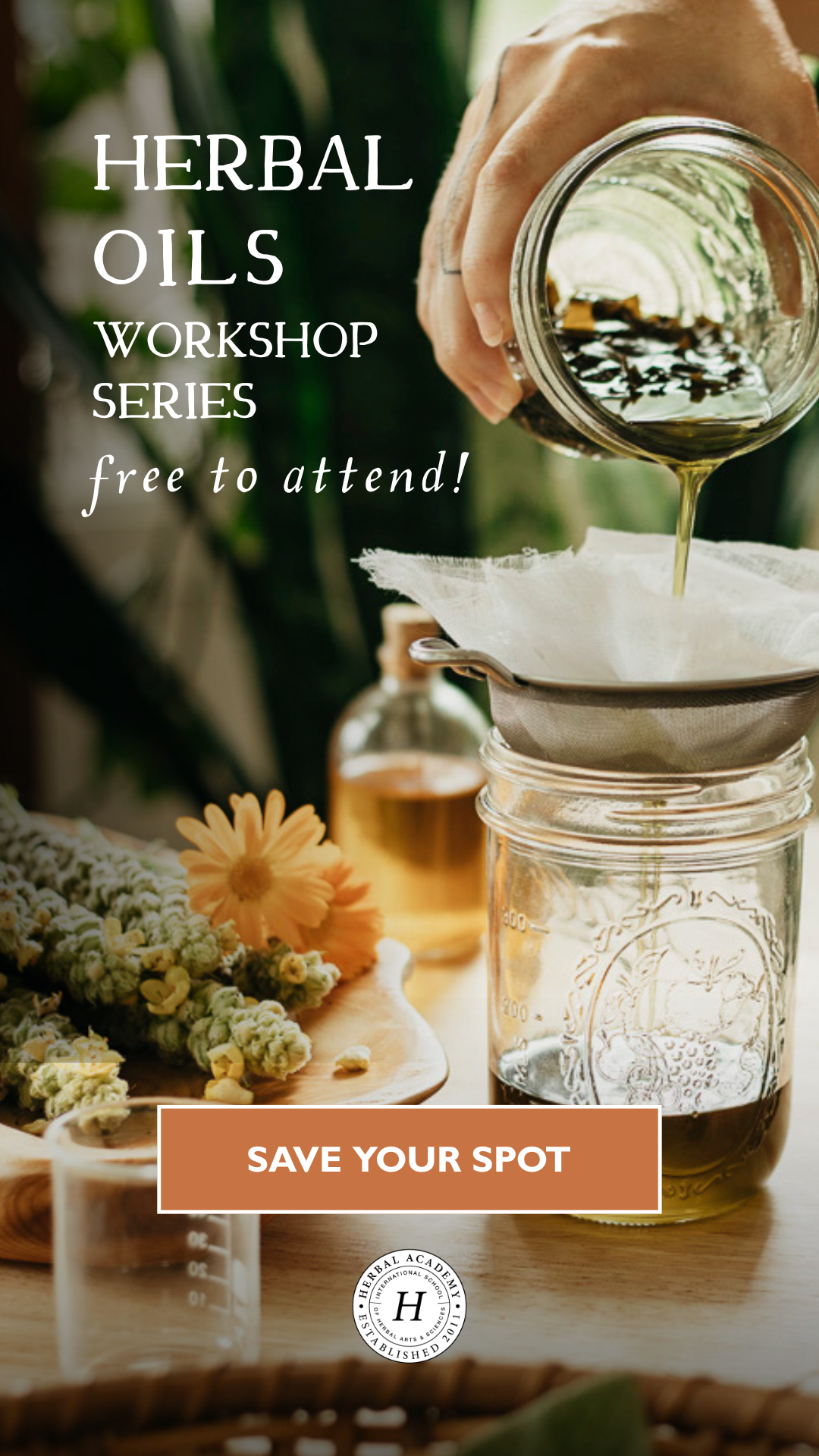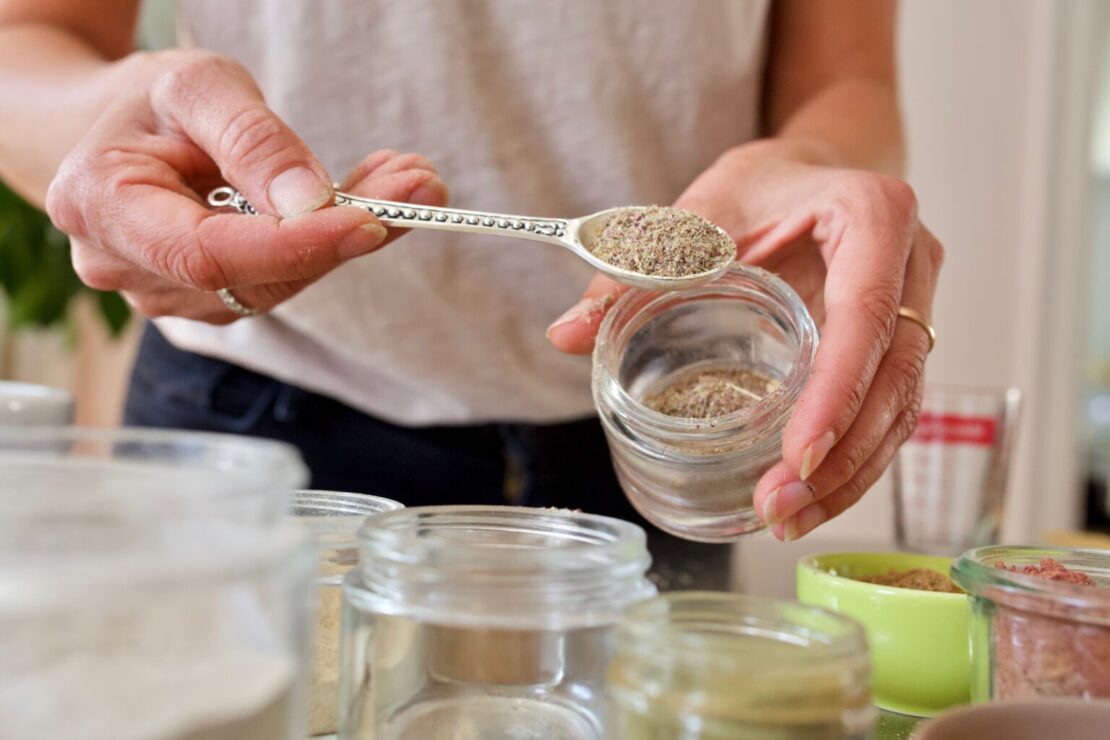
Herbal Support for Menopause + An Herbal Formula for Dryness
While studying Ayurveda, our teacher emphasized many times that “menopause is not a disease.” Though there are often symptoms associated with the transition from the menstruating years to menopause, menopause is a natural biological process and is simply part of the normal life cycle. Some individuals are fortunate enough to experience a relatively symptom-free menopause. However, fortunately, for those who do experience menopause and perimenopause-related troubles, such as dryness, hot flashes, difficulty sleeping, decreased energy, changes in weight, and mood swings, there are a number of plant allies and lifestyle factors that can ease the ups and downs and discomforts related to this time. This article will highlight an herbal formula that I designed to soothe overall dryness related to menopause. That said, there are a variety of herbal supports available for menopause and perimenopause, depending on how symptoms present—this article will touch upon some of these as well.
Menopause Basics, A Refresher
Before diving into specific protocols for working with menopause, let’s have a quick refresher on exactly what happens during this important time of transition. An individual is considered to be in menopause when they have ceased menstruation for one year, and the average age for menopause is 51 in the United States, but there is a range of normal and individuals certainly may go through menopause earlier or later than 51 (Cleveland Clinic, n.d.). The time leading up to menopause is called perimenopause and can last anywhere from a few to several years.
This transition into menopause can be a challenging time as the body adjusts to the associated hormonal changes. This is in part due to the fact that the ovaries begin to produce less estrogen and this then causes the centers in the brain that regulate hormones to communicate strongly to the ovaries to produce more estrogen, causing what herbalist Maria Noel Groves refers to as “hormone wobbles.” The result is fluctuations in hormone levels (beyond the typical ebbs and flows that are characteristic of the hormonal cycle), which can lead to hot flashes, insomnia, night sweats, and mood shifts that often come with the menopausal transition (Groves, 2016).
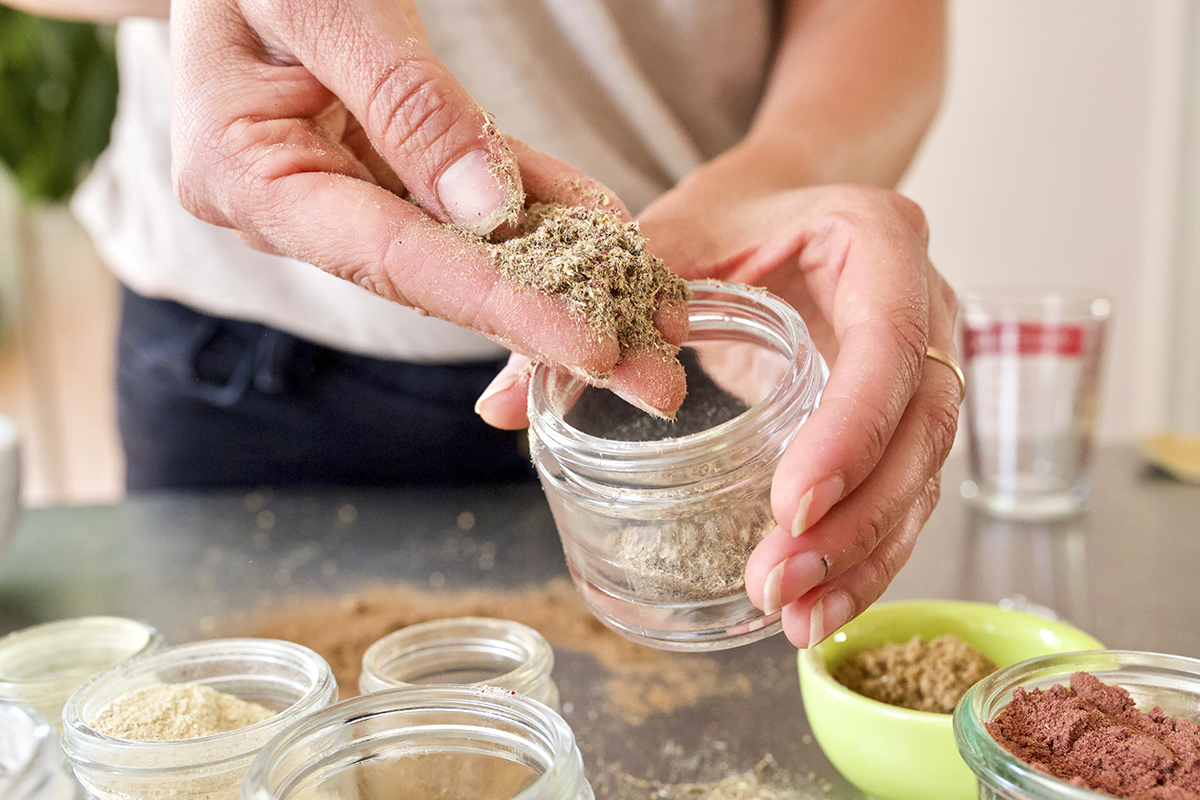
An Herbal Formula For Soothing Dryness
Since there are a number of symptoms that may be associated with menopause and perimenopause, I am not going to attempt to address the entire topic in-depth here. If you are struggling with menopausal symptoms, getting the help of an experienced herbalist who can create an herbal protocol to address your particular needs can be incredibly helpful. For now, let’s take a deeper dive into a common issue related to menopause—dryness—and how herbs can help. Compared to night sweats, insomnia, and mood swings, dryness may seem minor. However, when someone experiences chronic dry skin, dry eyes, and issues such as constipation and vaginal dryness, it’s certainly a problem worth addressing. Also, from an ayurvedic perspective, the fluids in the body are called the rasa, and having ample rasa is key for overall health and vitality. When rasa is depleted, this may ultimately relate to, or lead to, deeper imbalances and health concerns.
I created this herbal formula for an individual who came to see me in my Ayurveda practice for help with a variety of issues. She was in her late 60s and post-menopause (having ceased menstruating a number of years prior), and among her concerns were dry skin and dry eyes, vaginal dryness, anxiety, worry, overwhelm, thinning hair, and ligament laxity. As an ayurvedic practitioner, I classified these symptoms as being caused by an imbalance or excess in vata dosha. Vata dosha, characterized by the elements of air and ether, tends to produce symptoms of dryness, depletion, and excess mobility. To explain further, anxiety can be viewed as an air or vata condition because there may be a rapidness or lack of grounding to the thought patterns. Also, since vata dosha is dry by nature, dry skin, dry eyes, and any lack of moisture in the hair, skin, nails, or any bodily tissues are generally classified as a vata condition. Excess vata also causes weakness and depletion, so symptoms such as thinning hair and bone loss (not uncommon during the menopausal and post-menopausal years) are indicative of a vata imbalance. Furthermore, vata dosha is mobile by nature, so hypermobility or laxity of tendons and ligaments tends to be linked to an excess or imbalance of vata dosha.
It was not shocking to me that an individual in their late 60’s would be experiencing vata-related symptoms, as the post-menopausal years are considered the “vata time of life”— the time of life dominated by vata dosha. Childhood is considered the “kapha time” and the teenage years through middle years are the “pitta time.” For further reading on Ayurveda and the stages of life, you may wish to read the HA blog article Tips to Finding Balance in Each Stage of Life.
To return to the issue of addressing dryness with herbal support, let’s take a look at the herbal formula I created for my client. This formula was designed to target the overall dryness that was troubling her.

The intention of this blend is to build and disperse the rasa, or fluids, of the body. This formula is given in parts. A part can be anywhere from a teaspoon to a ¼ cup, depending on the size batch you wish to make.
4 parts shatavari (Asparagus racemosus) root, ground Mix all ingredients evenly and store in a closed container out of direct sunlight.
To Use:
Take 3/4 tsp herb blend in 1 cup just-boiled water 2x/day away from food. Optional: add 1 tsp of coconut oil or ghee to liquid to augment the demulcent qualities of the formula.
Rasa Builder: An Herbal Formula for Dryness
2 parts licorice (Glycyrrhiza glabra) root, ground
1 part marshmallow (Althaea officinalis) root, ground
1 part cinnamon (Cinnamomum spp.) bark, ground
1 part sarsaparilla (Smilax spp.) root, ground
After taking this formula for several weeks, along with making a few dietary changes, such as including more cooked and moist foods in her diet, my client reported a noticeable difference in the dryness she had been experiencing. Now let’s take a look at why I included each herb in this formula.
Rasa Builder – What’s In It and Why
Shatavari (Asparagus racemosus) root
Considered a rasayana in Ayurveda (a deeply nourishing and rejuvenating herb), shatavari is a go-to for many imbalances related to the ovo-uterine system. Also, rasayana literally means to “enter the rasa,” so this herb nourishes all the tissues of the body by entering and circulating throughout the lymph and other bodily fluids, which the organs are bathed in (Dass, 2013). In addition, shatavari is a cool and moist herb with a demulcent quality, so it is helpful for overall dryness and depletion. Though it may be used to increase fertility and regulate the menstrual cycle, this tonifying root is also useful for the transition into menopause and may be helpful in addressing hormone imbalance at any stage of life, due in part to the herb’s estrogenic effects (Dass, 2013; Groves, 2016). Shatavari promotes sexual vitality and can be used for soothing vaginal dryness, dry skin related to aging, and in supporting cervical mucus production (Groves, 2016).
As a nutritive, tonifying herb with cooling energetics, shatavari is of particular use to pitta individuals or for those with a pitta imbalance. Though my client was experiencing a range of symptoms caused by an imbalance in vata dosha, her innate constitution was predominantly pitta, so I felt that this would be a beneficial herb for her. This Rasa Builder herbal formula also contains a touch of cinnamon, which has a slightly warming effect and therefore balances out some of the coolness of the other herbs, making it a more vata-friendly blend. Furthermore, given that shatavari addresses dryness related to menopause and the aging process, it seemed like the perfect starring herb for this formula.
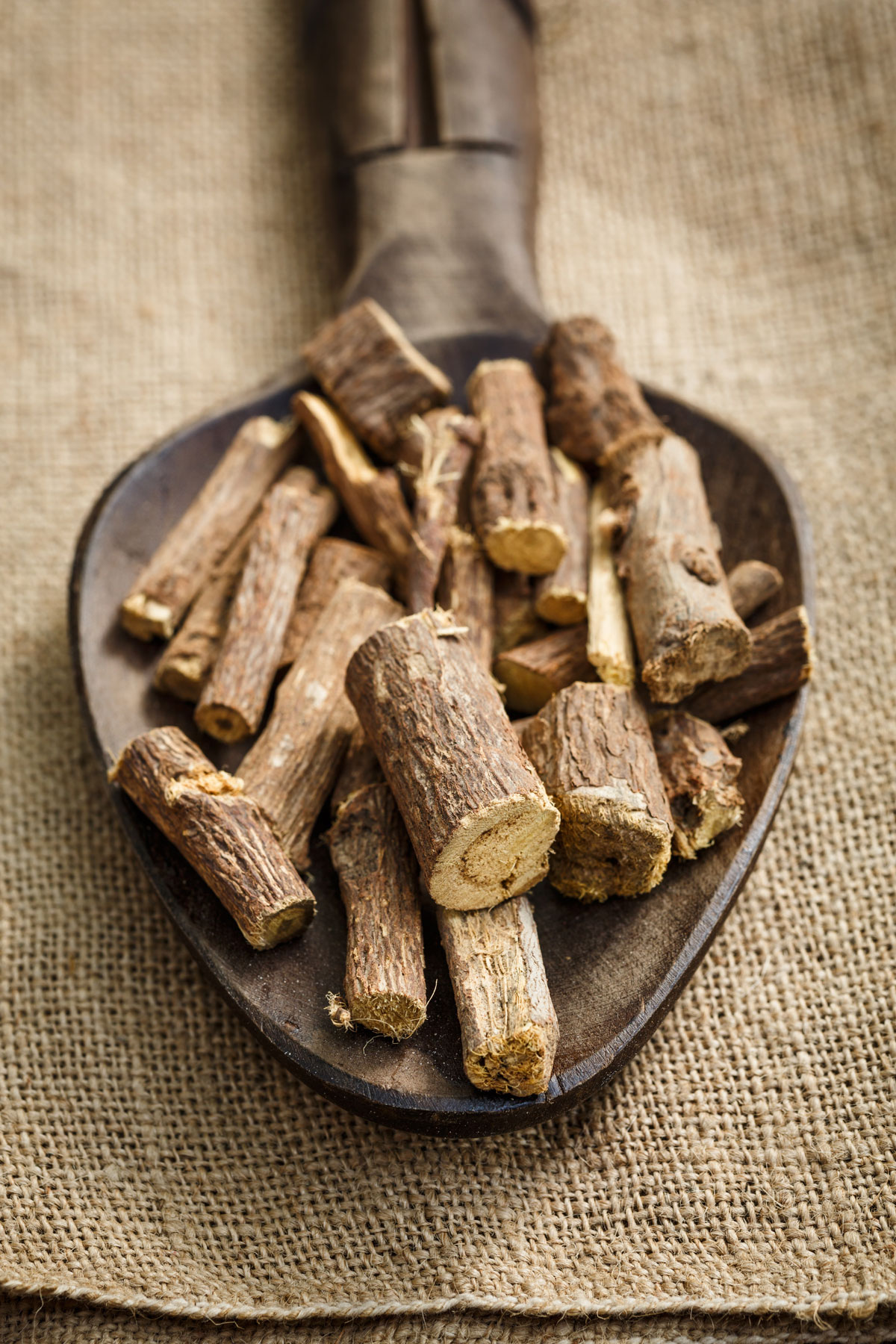
Licorice (Glycyrrhiza glabra) root
I included licorice in this formula chiefly for its demulcent function, but also because it is a nourishing tonic that is helpful for fatigue, overwork, and stress (Dass, 2013). In addition to dryness, my client was experiencing worry, anxiety, and overwhelm—we addressed this more directly with a separate nervine formula. However, in this formula, licorice serves the dual purpose of moistening and nourishing. Also, licorice is a nice herb for soothing inflammation in the gastrointestinal, respiratory, and urinary tracts (Dass, 2013), and dryness can cause tissues to be more susceptible to irritation and inflammation because they are lacking in the protection offered by a healthy layer of mucus and moisture.
There is a note of caution in using licorice when high blood pressure is a concern. However, this was not an issue for my client. If someone has or is at risk for high blood pressure, the amounts of marshmallow and licorice could be swapped, or the licorice could be left out of the formula completely.
Marshmallow (Althaea officinalis) root
I also chose marshmallow for its demulcent properties. This nourishing root is considered mucilaginous and soothing, and Ayurveda deems it as having an overall tonifying effect. Marshmallow is helpful for soothing issues of the respiratory, urinary, nervous, digestive, and reproductive systems, especially when those issues are related to dryness, inflammation, irritation, or depletion (Dass, 2013; Groves, 2016). As you can see, I was sure to include a few moisture-encouraging superstar herbs in this rasa-building formula.
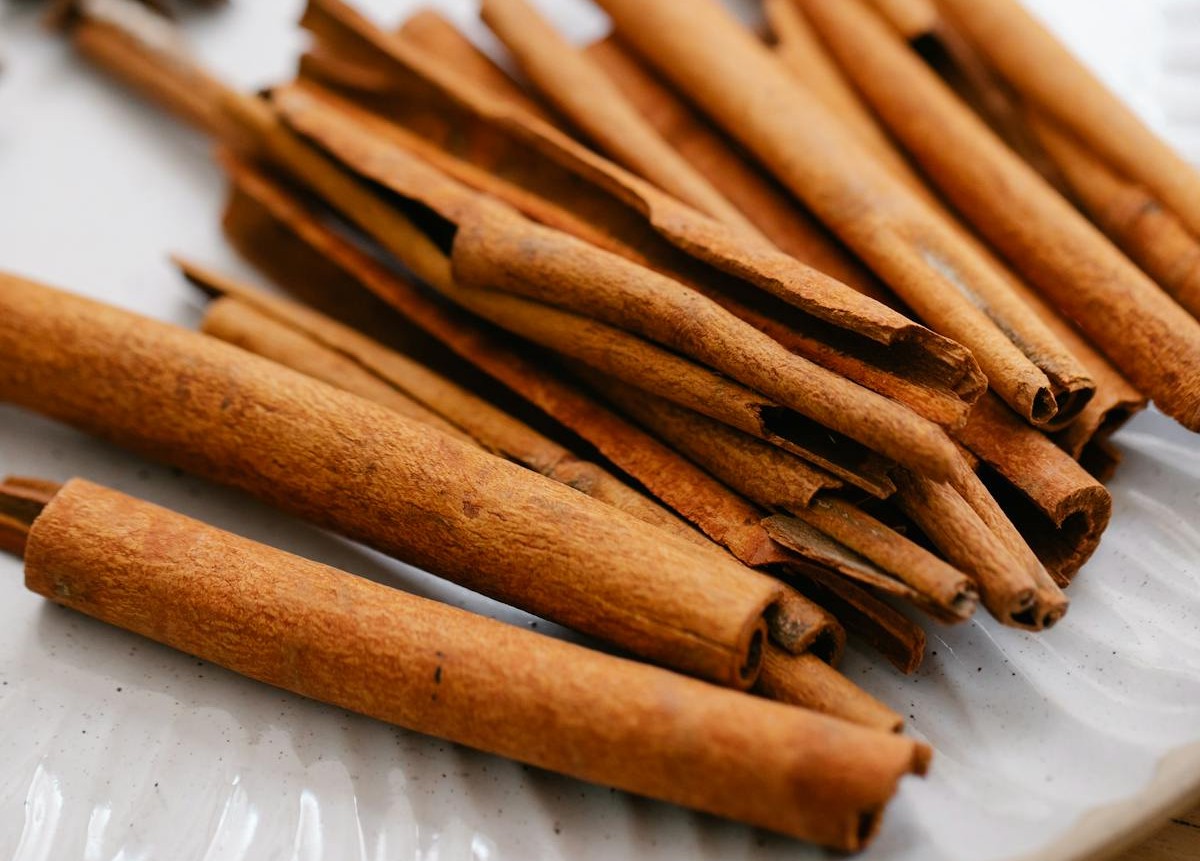
Cinnamon (Cinnamomum spp.) bark
My decision to include cinnamon in this formula was threefold: cinnamon is a digestive spice, so it is helpful for digesting the other herbs in this formula, which are, by design, fairly heavy and moist. This pleasant-tasting popular spice also supports circulation, contributing to my intent to both build and circulate the rasa. Furthermore, cinnamon has a gently mucilaginous quality—a feature you may be familiar with if you have ever left ground cinnamon in water for a while—it gets gooey!
This common cooking spice is not to be underestimated. In addition to gently stimulating the digestive fire and helping with the assimilation of nutrients (Dass, 2013), cinnamon modestly lowers blood sugar levels, helping with blood sugar balance (Groves, 2016). It is also considered a sattvic (clarifying) herb and helps with vata imbalances (Dass, 2013).
Sarsaparilla (Smilax spp.) root
Sarsaparilla may seem like an unusual herb to include in this formula. I chose it to add pleasantness of flavor and also because of its diaphoretic and alterative properties (Tierra, 1988). While building the rasa, I also wanted this herbal preparation to have a dispersing or circulating effect on the fluids of the body and to support the removal of any metabolic wastes from the rasa as the fluids of the body increased in quantity (looking to build quality and quantity!).
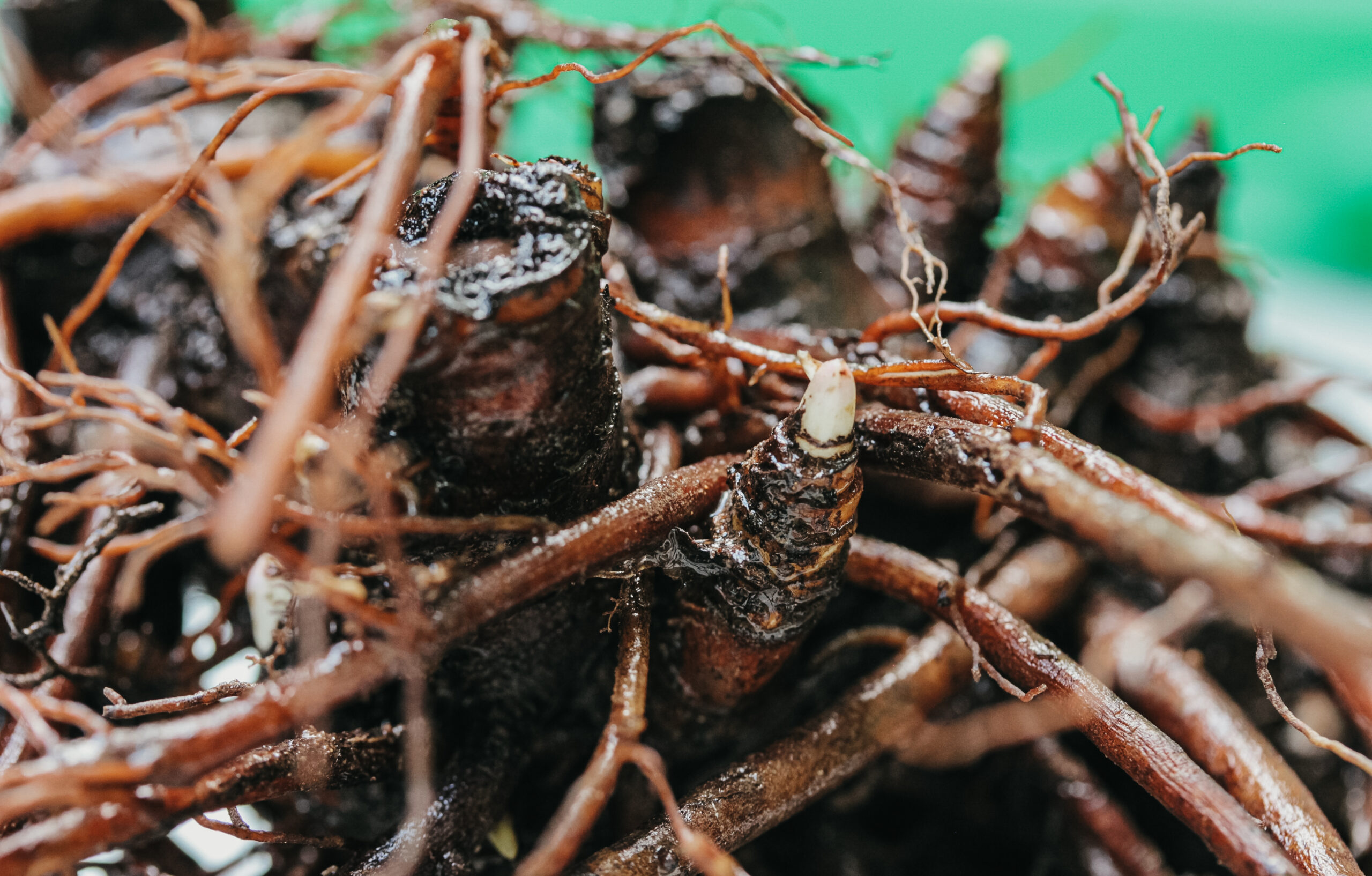
Black cohosh (Actaea racemosa) root
Other Herbs and Supports for Menopause
As I mentioned earlier, the experience of menopause can vary greatly in terms of timing and symptoms. In this article, I have shared one herbal formula that can be helpful for addressing symptoms of excess dryness that are often related to menopause. This herbal formula can also help with dryness not related to menopause.
Here are a few other general ideas on herbal supports for addressing symptoms related to menopause:
Hot Flashes
Though hot flashes and night sweats produce a feeling of intense heat, Ayurveda considers hot flashes during menopause to be caused by vata dosha because they are the product of fluctuating hormones. (Fluctuation is related to air and movement.) Therefore, looking at overall hormone balance and evening out the ebbs and flows of hormone levels can be helpful in easing hot flashes. Also, depending on the individual, focusing on reducing or balancing vata dosha overall may be a good idea. This can be done through a number of factors, such as establishing regular routines, getting plenty of rest, eating mostly cooked, moist foods, and nourishing the body both inside and out with good-quality oils.
In terms of herbal support, black cohosh (Actaea racemosa) root is a go-to for hot flashes and a range of issues related to hormone imbalance. It has estrogen-like effects and may lower levels of luteinizing hormone (LH), which can be high during post-menopause. Many people are concerned about too much estrogen. However, phytoestrogens (plants that mimic estrogen) tend to have a balancing effect on estrogen either way. They can be helpful in cases where estrogen levels are lacking or excessive, as the estrogen-like constituents in the plant bind to estrogen receptors, either blocking excess estrogen or having an estrogen-like effect in cases where the hormone is lacking. Consider black cohosh in cases of cyst formation, mastitis, painful or delayed menstruation, hot flashes, and night sweats (Groves, 2016; Mills & Bone, 2000).
Shatavari has potential estrogenic effects (Groves, 2016) and therefore can be a solid choice for a number of issues during the menopausal transition. Its soothing, nourishing, demulcent properties make it a win-win as a menopause-support herb. Red clover (Trifolium pratense) and sage (Salvia officinalis) also possess phytoestrogens that can be supportive for menopause, particularly if hot flashes are present (Groves, 2016).
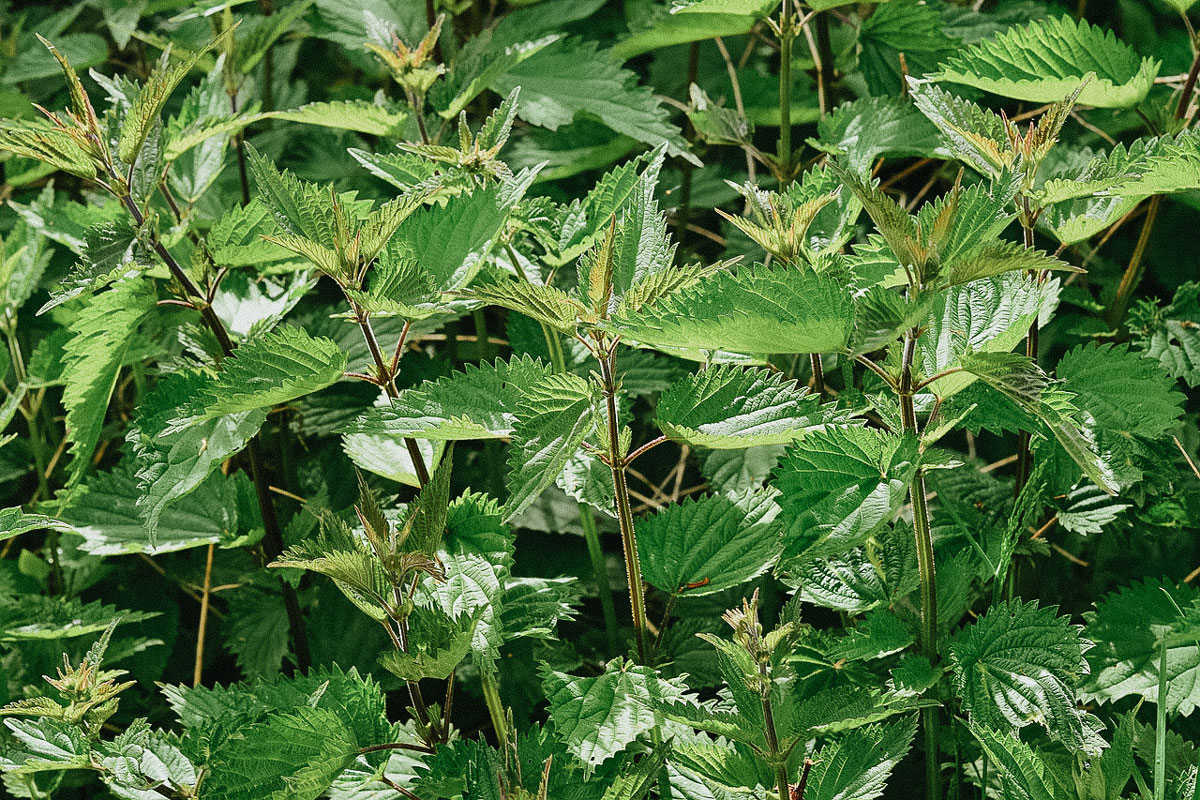
Nettle (Urtica dioica)
Nourishing Bone Health
As estrogen levels drop, bone density is often compromised. The stronger your bones are during the earlier part of life, the less risk you will have for developing osteoporosis. However, we can support bone health and bone density at all stages of life. Eating a diet that tips toward alkaline (is rich in fresh plant foods) and minimizes acidic foods (soda, sugar, refined carbohydrates, and meat products) is one way to support bone health. This is because your body pulls calcium from your bones in order to neutralize blood acidity. So, the less acidic your blood (to a point) the more calcium will stay in your bones (Groves, 2016). In addition, nettle, oat straw, alfalfa, and horsetail are all helpful in providing minerals that nourish bone health. These can be made into a simple infusion and sipped daily. Also, Ayurveda suggests rasayanas such as ashwagandha (Withania somnifera) root for building both bone and muscle mass (Dass, 2013).
Supporting Mood and Sleep
It is also vital to tend to mood and energy levels during menopause. It is not uncommon to experience mood swings, low mood, and lack of energy during this time of transition. Fortunately, there are a range of adaptogens and nervines that can help smooth out the bumps. You can choose the best energy and mood-support herbs based on your constitution and particular needs. However, some nice go-tos are tulsi (Ocimum tenuiflorum), schizandra (Schisandra chinensis), ashwagandha (Withania somnifera), gotu kola (Centella asiatica), lemon balm (Melissa officinalis), and motherwort (Leonurus cardiaca). If getting enough sound sleep is a concern, you may want to consider paying extra attention to healthful routines around sleep, as well as sleep-supportive herbs such as passionflower (Passiflora incarnata), valerian (Valeriana officinalis), and skullcap (Scutellaria lateriflora). For more detail on developing healthful routines around sleep, you can read our blog post 5 Lifestyle Hacks for Sound Sleep.
In Closing,
The individual experience of menopause varies widely. However, there are common trends and patterns in terms of the troubles associated with this time. By drawing upon beneficial herbs and lifestyle supports, this transitional period can be smoothed out and the discomforts minimized. It may be helpful to remember that most transitions come with a certain level of stress, but that this is a natural, healthy change that is part of the life cycle, and that with the right support, menopause can be a time to honor rather than dread.
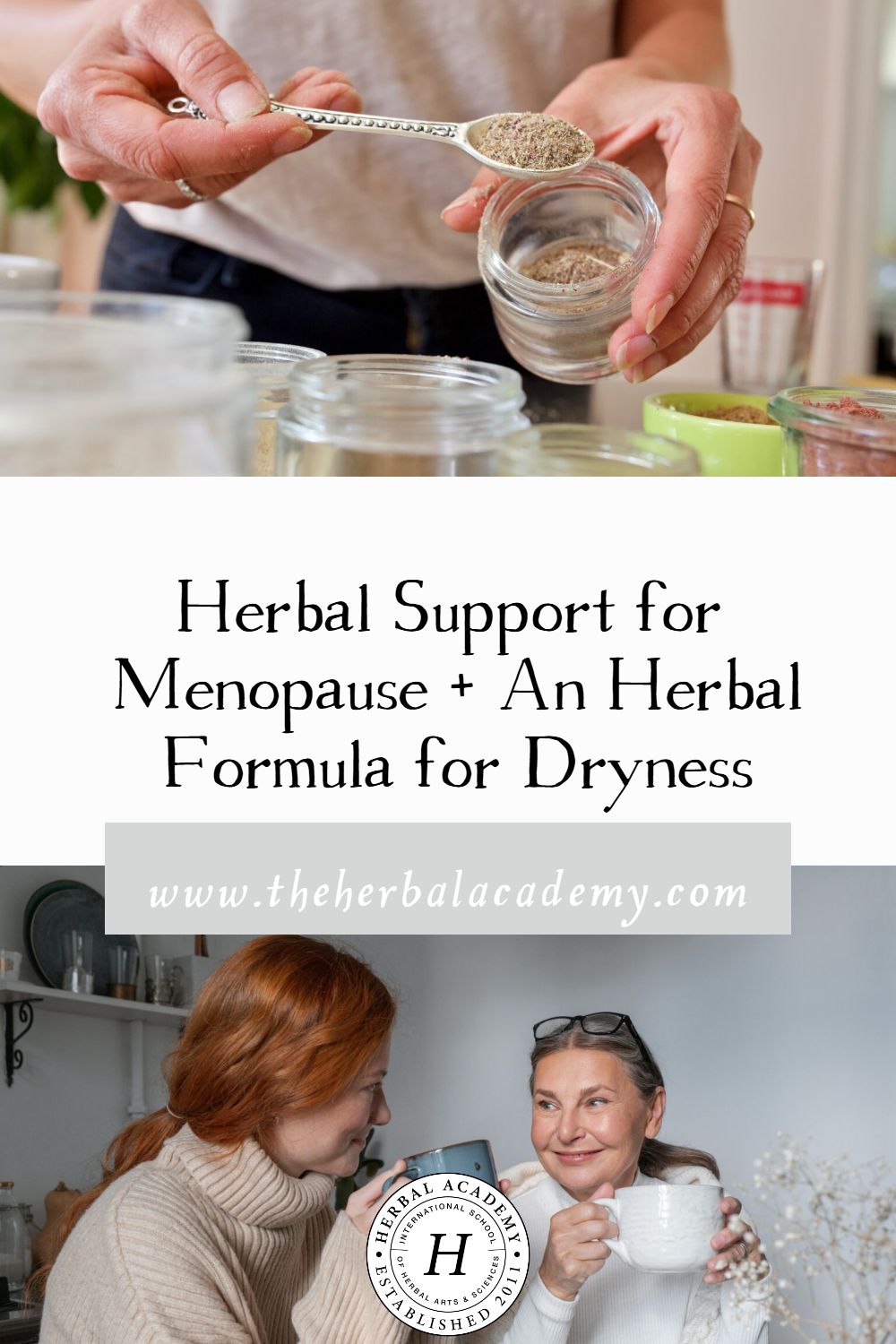
REFERENCES
Cleveland Clinic (n.d.). Menopause. Retrieved from https://my.clevelandclinic.org/health/diseases/21841-menopause
Dass, V. (2013). Ayurvedic herbology East & West: A practical guide to ayurvedic herbal medicine. Lotus Press.
Groves, M.N. (2016). Body into balance: An herbal guide to holistic self-care. Storey Publishing.
Mills, S., & Bone, K. (2000). Principles and practice of phytotherapy: Modern herbal medicine. Churchill Livingstone.
Tierra, M. (1988). Planetary herbology. Lotus Press.


